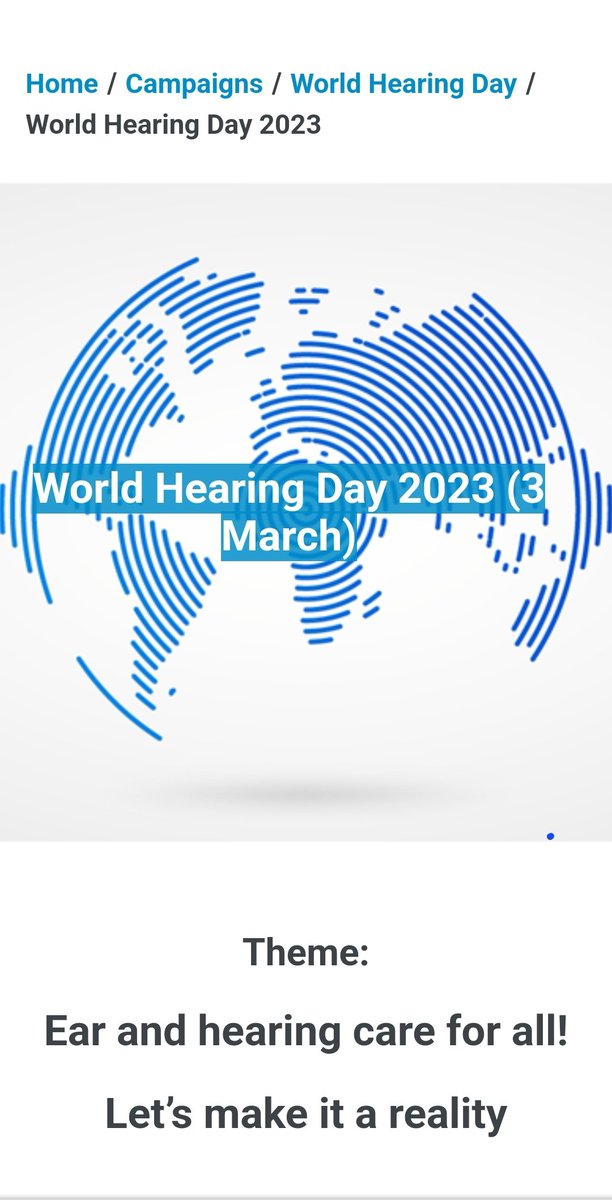
A seemingly innocuous habit resulted in tinnitus and hearing impairment in a young woman
1. 30-year old Lata presented with tinnitus in both ears of three months duration. It was a constant buzzing sound in ears, which was quite annoying for her.
#MedTwitter #HearingLoss
1. 30-year old Lata presented with tinnitus in both ears of three months duration. It was a constant buzzing sound in ears, which was quite annoying for her.
#MedTwitter #HearingLoss
2. One month back Lata also developed hearing problem in both ears. She was unable to respond to her children's voices from the adjoining room at home. She missed registering a few words during routine conversation with others. She consulted an ENT surgeon for evaluation.
3. ENT exam confirmed the worst- she had high-frequency hearing loss. However, local examination of ears was normal.
Lata was too young to develop age-related hearing loss, as it usually affects people aged 65 and above. ENT doctor wanted neurological cause to be excluded.
Lata was too young to develop age-related hearing loss, as it usually affects people aged 65 and above. ENT doctor wanted neurological cause to be excluded.
4. I carefully listened to Lata's complaints. She had no headache, imbalance or dizziness that could point to brain disease. Also, the tinnitus & hearing impairment started insidiously & gradually worsened over 3 months, which was against infection or lack of blood flow to brain.
5. I enquired about her daily routine. Lata was fond of listening to music, and listened to favourite songs using headphones for 4-6 hours daily. She often went to sleep with headphones plugged into her ears. In addition, she watched TV (with loud audio) for 3 hours in evenings.
6. The cause was obvious now. Lata was suffering from noise-induced tinnitus & hearing loss, which could be attributed to listening to loud music for several hours via headphones & loud audio of TV.
I counselled Lata about the possible cause of her symptoms and the remedial steps
I counselled Lata about the possible cause of her symptoms and the remedial steps
7. I didn't order MRI brain, nor did I prescribe any medicines. Lata accepted to reduce duration of headphone usage & exposure to TV audio. She agreed to keep the sound levels on headphones and TV audio to lower (permissible) levels.
At 1 month review, she had partly improved.
At 1 month review, she had partly improved.
8a. In a study, adolescents exposed to high noise levels via headphones in a noisy environment had a hearing loss prevalence of 22.6% and adolescents using earphones for 80 minutes or more per day on average had the hearing loss prevalence of 22.3%
doi.org/10.1097/md.000…
doi.org/10.1097/md.000…
8b. Further analysis revealed that adolescents who used earphones in a noisy environment had a 4.5-fold higher risk of hearing loss and an 8.4 times higher risk of having a subjective hearing problem than those who did not use earphones.
8c. Additionally, adolescents who used earphones more than 80 minutes per day in a noisy environment had a 4.7 times higher risk of hearing loss than those who used them less than 80 minutes per day.
9a. Duration of the listening session/per day for more than 5 h was associated with higher rates of hearing problems among participants (33.9% vs. 16.5%). Typical level of TV or radio volume of 90–100 was associated with hearing problems among 32% compared to 11% in control group
9b. Reference: doi.org/10.1016/j.amsu…
10a. Steps to safeguard hearing:
*Keep the volume as low as possible, while using headphones. Sound less than 70 dB is unlikely to cause any significant damage to the ears, while exposure to sound of 105 to 110 dB can cause damage in five minutes.
*Keep the volume as low as possible, while using headphones. Sound less than 70 dB is unlikely to cause any significant damage to the ears, while exposure to sound of 105 to 110 dB can cause damage in five minutes.
10b.
*Keep the duration of sound exposure lower.
For those whose jobs require headphone use for 8 h, keep the sound at 85dB or less. Headphone use at only slightly higher level than this can cause damage within an hour.
*Give periodic breaks to ears during long audio sessions.
*Keep the duration of sound exposure lower.
For those whose jobs require headphone use for 8 h, keep the sound at 85dB or less. Headphone use at only slightly higher level than this can cause damage within an hour.
*Give periodic breaks to ears during long audio sessions.
10c
*Avoid going to bed with headphones plugged in.
*Use ear protection while attending concerts/pubs, where loud volume music is expected.
*Avoid going to bed with headphones plugged in.
*Use ear protection while attending concerts/pubs, where loud volume music is expected.
Incidentally, today (March 3) is World Hearing Day.
Theme for this year, as per WHO, is:
Ear and hearing care for all!
Let's make it a reality.
Theme for this year, as per WHO, is:
Ear and hearing care for all!
Let's make it a reality.

• • •
Missing some Tweet in this thread? You can try to
force a refresh







